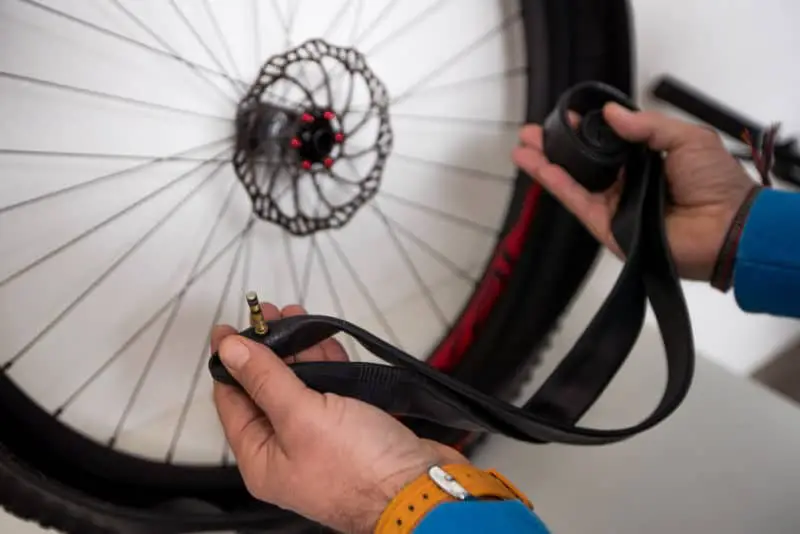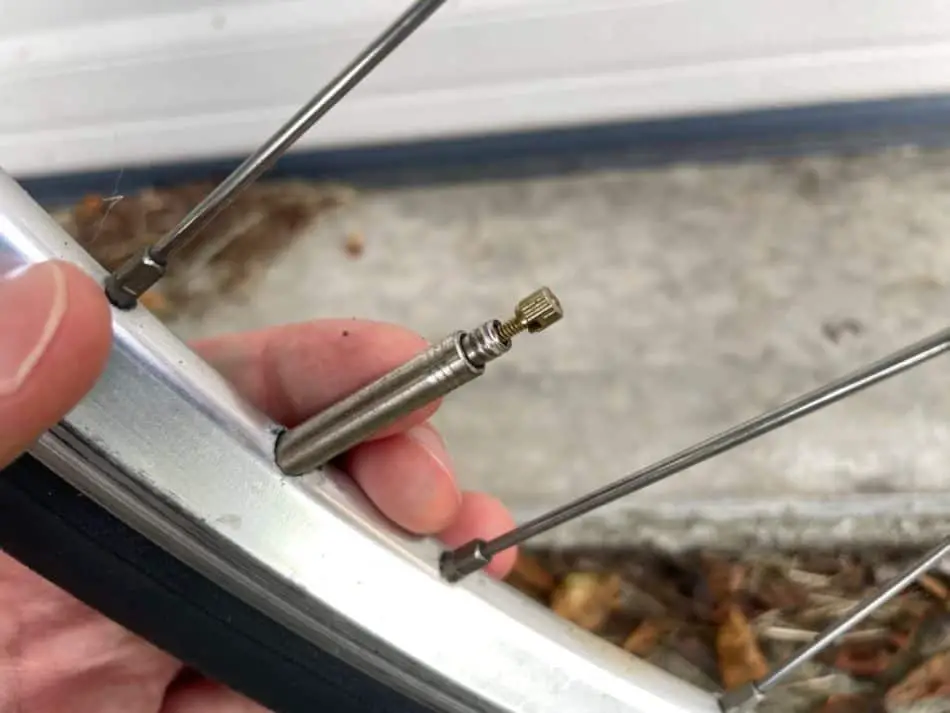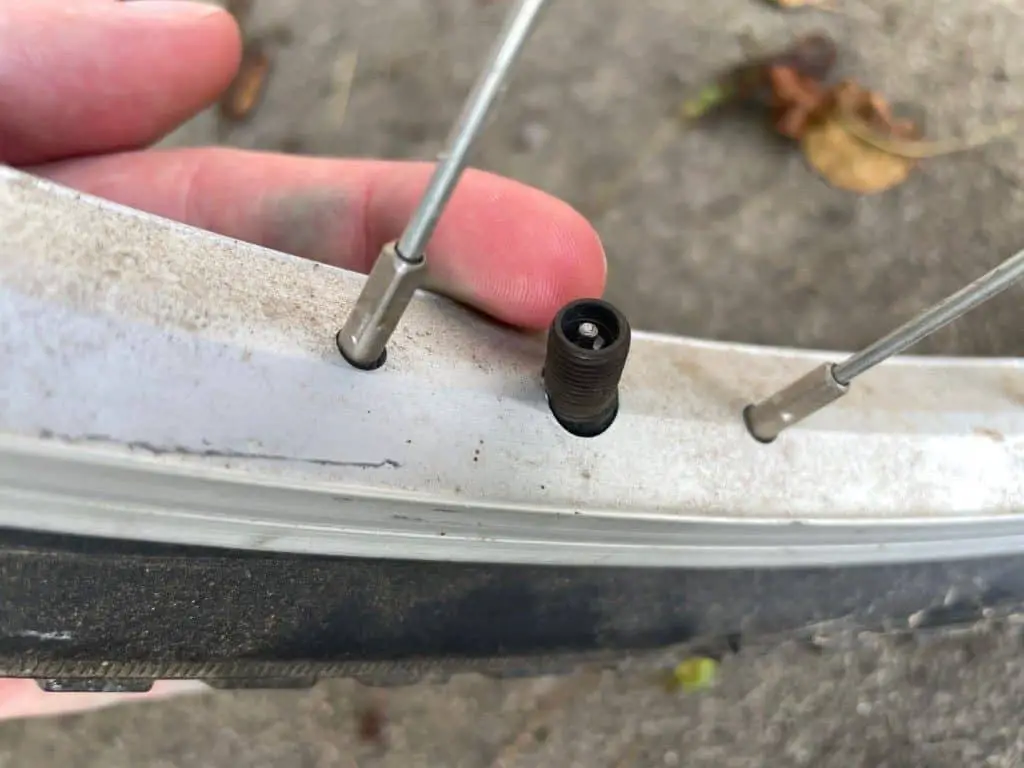There are literally hundreds of bike tire and tube models on the market today. So which ones are compatible with your bike? Or can you just slap any tire and tube combination on any bike and ride without issue? Let’s find out!
Are Bike Tires Interchangeable?

Not all bike tires will fit on all bikes. To determine if a certain tire will work on your bike, you need to identify three factors: the tire’s diameter, its width and the internal width of your bike’s rims. Tires are designed specifically around these characteristics and aren’t interchangeable.
We’ll get into the specifics of each factor below, but first:
Can You Put Road Bike Tires on a Mountain Bike (Or Vice Versa)
If your road bike tires are the same diameter as your mountain bike wheels and are compatible with the wheel’s internal diameter, then technically you could put them on your mountain bike.
Whether you should is another story.
Road bike tires are designed for speed and rolling efficiency, so they won’t offer the grip, traction or cornering stability necessary for serious off-road use.
The same holds true for putting mountain bike tires on a road bike: if they fit (and this is unlikely given how much wider mountain bike tires tend to be) they will roll significantly slower than road bike tires and will be much harder to get up to speed. Neither of these are things you want if you put in a lot of miles every week.
For more detail on this subject, check out our previous article, Can You Put Road Tires on a Mountain Bike?
How to Check if a Bike Tire Will Fit Your Wheel
For this section, we’ll use a sample tire to illustrate how to identify each of the three factors below. The Maxxis Minion DHR II is one of the most popular tires that comes stock on most mountain bikes today, so use the example above to follow along!
Tire Diameter
Modern bikes are most commonly designed around either 26”, 27.5”/650B or 29”/700C wheels. Therefore, most bike tires will also be found in these three sizes.
A tire’s size can be found on its sidewall. It will be in the form “Diameter X Width” (for example, 29 X 2.5). Using our Maxxis DHR II example, you can see it’s offered in five different diameters: 20” and 24” (designed for kids’ bikes), 26”, 27.5” and 29”.
Diameter is the most important of the three measurements we’ll discuss.
Why?
Because while most wheels are compatible with a small range of tire widths and most tires are compatible with a small range of rim internal widths, wheels are only compatible with one tire diameter.
If you’re not sure what diameter tire your bike needs and currently don’t have any existing tires on your bike, you can either check the manufacturer’s website, look for the size label on your rim, or simply measure the diameter of your rim. It will correspond directly to the tire size you need.
Tire Width
Tires can vary greatly in width between models, from less than an inch for road racing tires to more than 3” for fat bikes. Generally, wider tires will offer better grip and cornering stability while narrower tires will be lighter and roll faster.
A tire’s width will be listed on the sidewall directly after its diameter. The Maxxis Minion DHR II is offered in widths of 2.3”, 2.4”, 2.6” and 2.8”.
To determine if a specific tire width is compatible with your bike, consult the bike manufacturer’s website. Bike forks and frames are designed to accommodate a range of bike tire widths up to a maximum. If you try to fit a tire that’s too wide, it will rub against your fork or frame and inhibit its ability to roll smoothly.
Also consider that if you’ve added an aftermarket fender to your bike, you’ll want to make sure the tire is compatible with it as well. Consult the fender manufacturer’s site before buying a new tire, especially if it’s wider than your previous tire.
Rim Internal Width
The internal width of your rim is also important to consider. While most road bike rims fall within a very narrow range and can accommodate any tire, the trend in mountain biking has drifted toward rims of increasing width. Wider rims have more lateral stiffness and respond quicker to rider input, but they need tires specifically designed for their larger width.
These wider rims are sometimes designated WT for Wide Trail and have an internal width of 30-35mm. The Maxxis Minion DHR II offers some models in a WT version for bikes with wider than standard rims. If the internal width of your rims is less than 30mm, standard tires will work just fine.
You can measure the internal width of your rim or consult the manufacturer’s website to determine whether you’ll need a standard or WT tire. Some plus size or fat bike rims may be even wider than 35mm, and therefore will need an even wider tire. If you have one of these bikes, make sure to get the appropriate tires to match!
Are Bike Tubes Interchangeable?

Like bike tires, bike tubes won’t be compatible with every bike. When selecting a bike tube for your tire, you’ll need to make sure you choose the correct tube diameter. Tubes are compatible with a narrow range of tire widths, so make sure your tire is within that range before you install the tube.
Also like bike tires, road bike and mountain bike tubes are not compatible. Road bike tubes are much narrower to fit in narrow road tires, while mountain bike tubes are wider to accommodate wide mountain bike tires.
And while a road bike tube will technically fit inside a mountain bike tire, it won’t offer enough internal support to fill out the tire or keep it from collapsing while cornering. The tire will feel very squishy, which will significantly increase rolling resistance and make pedaling and gaining speed a chore.
How to Check if a Bike Tube Will Fit Your Wheel / Tire
Tube Diameter
Bike tubes will come in all major tire sizes, with the most common (for adult bikes) being 26”, 27.5” and 29”. Tube diameter should match tire diameter: a smaller or larger tube just won’t fit properly in between the tire and the rim.
Tube diameter will be easy to identify: it will be listed right on the box your new tube comes in.
Tube Width
Tubes can typically accommodate a range of tire widths. For road bike tubes, that range is generally very narrow (4-6mm or less). For example, this 29”/700C diameter road bike tube is compatible with 28-32mm wide road bike tires.
For mountain bike tubes, the range is much wider (generally 0.3-0.4” or more). This 27.5”/650B diameter mountain bike tube is compatible with 2.4-2.8” wide mountain bike tires.
For the most precise fit, choose a tube with the smallest range that still contains your bike tire’s width. For instance, if your bike tire is 2.4”, a tube with a 2.2-2.4” range will offer a better fit and feel than a tube with a 2.4-2.8” range.
Valve Type
Depending on the type of wheels your bike has, this may not matter…but many times it does. And if it does, making the wrong valve choice will be a big compatibility issue.
You have two valve options: Presta or Schrader.
A Presta valve is the more common option on road and mountain bikes at most price points (aside from some very inexpensive options). They are longer and thinner than Schrader valves.

Schrader valves are mostly found on budget-friendly, hybrid or kids’ bikes. They are shorter and stubbier than Presta valves.

When installing a bike tube, the valve fits through a hole drilled into the rim to make it accessible from the outside of the tire. Given the size difference between the two valves, you can see why there would be a compatibility issue.
If the rim opening is designed for a Presta valve, a Schrader valve simply won’t fit. If it’s designed for a Schrader valve, a Presta valve will wobble around inside the hole, which is not ideal. Some Presta valve tubes come with grommets to secure them in a hole drilled for a Schrader valve, but this isn’t always the case.
Don’t forget about inflating that tube either! Presta and Schrader valves require different adapters to inflate. If your pump is able to inflate both, you’re good to go. But if not, now you need to buy another pump…
Do You Need a Tube in Your Bike Tire?
Many road and mountain bikers today prefer to ditch tire tubes and go tubeless. Tubeless compatible tires and rims mean that bike tubes just aren’t necessary anymore, and there are some clear advantages to this.
First, tubeless tires provide better grip in all situations, especially while riding terrain with lots of trail obstacles or in poor weather conditions. The lower tire pressure you can run in tubeless tires makes them feel softer, which enables them to conform to the surface you’re riding on much better.
Second, tubeless tires remove the risk of pinch flats. This occurs when you ride over a hard or sharp obstacle and your tube gets pinched between the rim and the tire, causing it to pop.
If you want to learn more about the benefits of tubeless tires, check out our article, Do Mountain Bike Tires Have Tubes?
